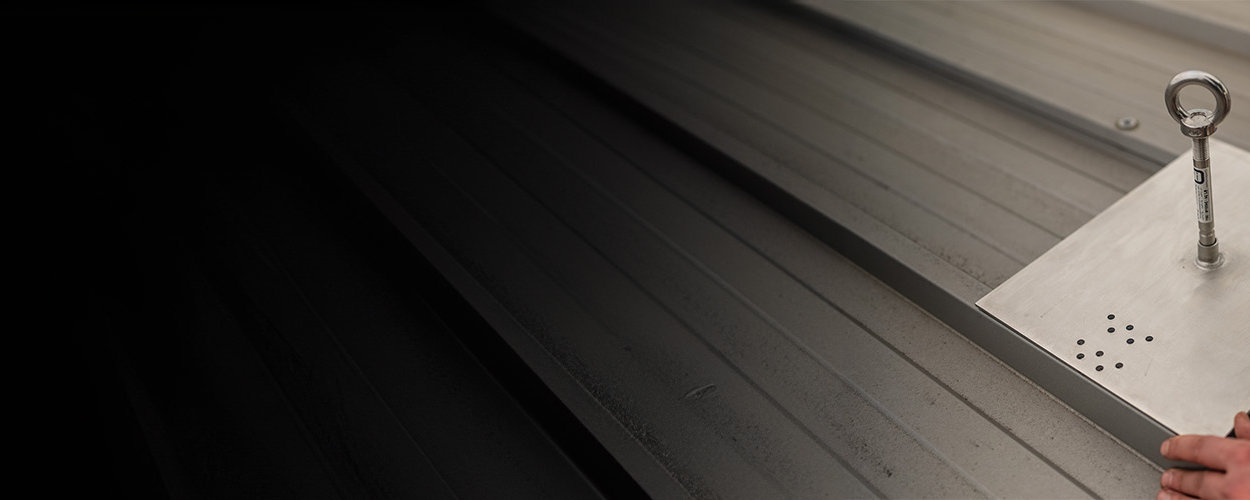What is a lifeline system?
In the simplest case, a lifeline system consists of two end attachments between which a (stainless steel) rope is tensioned. The rope can be tensioned horizontally or vertically. Vertically mounted lifeline systems are often found next to ladders and serve as climbing protection. Vertical lifeline systems are very similar to the simplified example (2 end attachments & 1 stainless steel cable). Horizontal lifeline systems, on the other hand, are usually more complex in design.
How does a lifeline system work?
Using a suitable class C lifeline system, the person to be secured can now establish a connection between their own PPE and the lifeline system. The person to be secured is now able to move safely along the rope system. In the case of traversable rope systems, a universal runner is also added, which can run along the rope system in the direction of movement of the user.
Horizontal lifeline systems
Horizontal lifeline systems can be used to secure large areas at risk of falling. Horizontal lifeline systems are therefore particularly suitable for use on flat roofs. As horizontal lifeline systems can also be used to create curves or traversable straight sections, their design is usually more complex than that of vertical lifeline systems.
What are horizontal lifeline systems made of?
The basic structure here also consists of 2 end attachments and a strong VA rope. However, there are also intermediate brackets and curves to create not only simple straight lines, but also rectangular or polygonal securing areas, for example. A rope tensioner is used to reduce the rope slack in complex systems. The static load is reduced by a force absorber. The VA rope is usually designed in 6mm or 8mm.
Drive-over cable system or non-drive-over cable system?
A high degree of flexibility when working in areas where there is a risk of falling or along a fall edge while maintaining safety is highly appreciated by the people being secured. A traversable lifeline system offers the greatest flexibility and safety. If a suitable universal runner is used, people can pass right over the intermediate holders and curves. This means that they do not have to release the lifeline.
When used as a non-traversable cable system, the user connects directly to the movable guide using a class B, T or A connecting element in accordance with DIN EN 362:2008. When using a connecting element, the curves and intermediate brackets cannot be driven over. As a result, the user is briefly not secured by the system when climbing over.
It is therefore important that the user is additionally secured to the horizontal guide via a second connecting element with lanyard or alternatively with a Y-lanyard before the first connecting element is removed when climbing over in an area where there is a risk of falling. This may not be necessary when climbing over in areas where there is no risk of falling.
